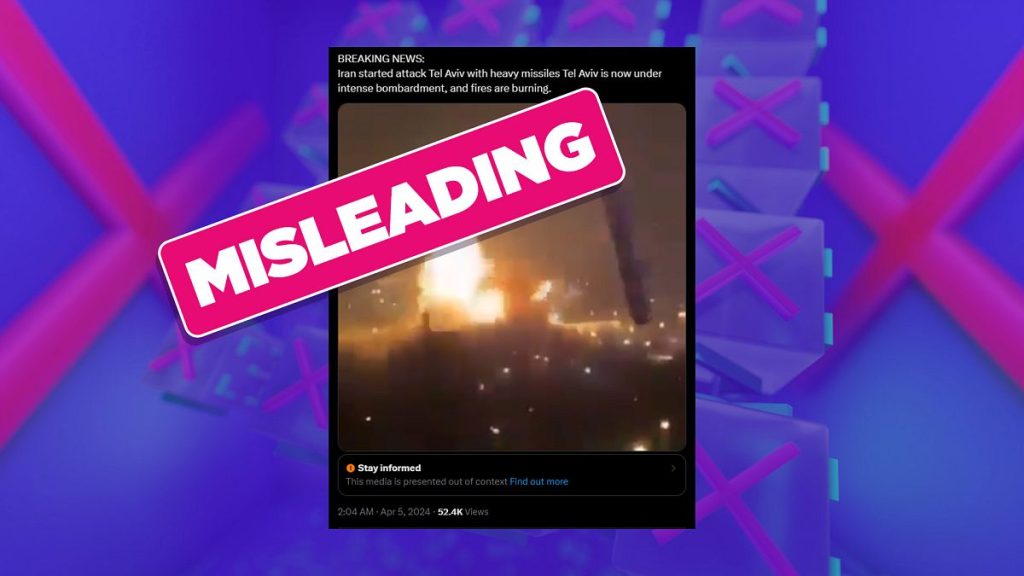A misleading video claiming to show an Iranian missile strike on Tel Aviv has been circulating on social media, but it was actually footage of a Ukrainian missile strike on Sevastopol in Crimea. The video was shared in the context of Israel attacking the Iranian embassy in Damascus, leading to false headlines on X’s trending feed. The fake news was promoted by X’s AI chatbot, Grok, which now generates contextual information for trending topics. This incident highlights the potential dangers of relying too heavily on artificial intelligence for news dissemination.
The video in question was shared online with captions describing intense missile strikes on Tel Aviv, but it was actually footage of a Ukrainian attack on Sevastopol in Crimea. The misleading information was shared in response to Israel’s attack on the Iranian embassy in Damascus, leading to false headlines being promoted by X’s AI chatbot, Grok. This incident serves as a reminder of the importance of fact-checking and verifying information before sharing it on social media, as false information can quickly spread and have serious consequences.
Fact-checkers have criticized X for allowing false information to be promoted on its platform, highlighting the dangers of relying too much on artificial intelligence for news dissemination. X’s AI chatbot, Grok, generated a fake headline for the misleading video, based on the content shared by users. This incident demonstrates the potential risks associated with automated news curation and the importance of human oversight in verifying and contextualizing information.
The role of X’s AI chatbot, Grok, in promoting false information on its platform has raised concerns about the limitations of artificial intelligence in news dissemination. The chatbot generated a misleading headline for the video showing the Ukrainian missile strike on Sevastopol, which was then shared widely on social media. This incident underscores the need for human oversight in the curation and verification of news content, as automated systems can make mistakes that have serious consequences.
The incident involving the misleading video of a Ukrainian missile strike being falsely attributed to Iran highlights the potential dangers of relying on artificial intelligence for news dissemination. X’s AI chatbot, Grok, generated a fake headline for the video, which was then shared on social media, leading to widespread misinformation. This incident serves as a cautionary tale about the limitations of automated systems in the curation and verification of news content, emphasizing the need for human oversight to prevent false information from spreading.
The incident involving the miscaptioned video showing a Ukrainian missile strike being falsely attributed to Iran highlights the potential risks of relying on artificial intelligence for news dissemination. X’s AI chatbot, Grok, generated a misleading headline for the video, which was then shared on social media, leading to widespread confusion and misinformation. This incident underscores the importance of fact-checking and verifying information before sharing it online, as false information can quickly spread and have serious consequences.


